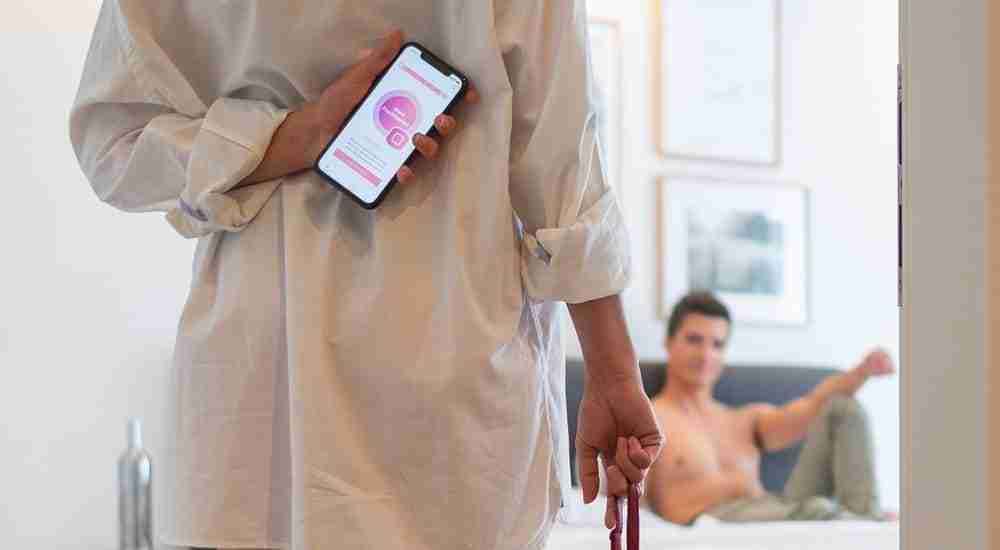
e have summarised 8 facts about ovulation that you (perhaps) didn't know, a little "ovulation basics" so to speak.
What exactly was that again about ovulation? After we already discussed several methods last week, yours Calculate ovulationwe want to go a little deeper into the subject today. That's why we've summarised 8 facts about ovulation that you (perhaps) didn't know, a little "ovulation basics" so to speak.
1. you don't always ovulate
You don't ovulate every cycle and that's nothing to worry about. So-called anovulatory cycles are completely normal as long as they do not occur too often. Studies show that most women have one to two cycles per year in which ovulation does not occur. If you don't track your ovulation, for example with ovulation trackers such as femSense, you probably won't even notice. Although in many cases you will also bleed after an anovulatory cycle, this bleeding is not actually your period, but oestrogen breakthrough bleeding caused by a low progesterone level and an accumulation of uterine lining.
Anovulatory cycles are therefore not a sign of infertility. However, if it looks like your anovulatory cycles are chronic, you should definitely have this checked out by your gynaecologist.

2. ovulation is not always on day 14 of your cycle
In theory, a woman's cycle lasts 28 days and ovulation takes place on day 14 of the cycle. However, this statement should not be taken at face value, as the female body is complex and does not adhere to such theories. Every woman is different and the female cycle is also individual. In addition, every ovulation is the result of a complex chain reaction that begins in the previous cycle and can be different every time. A study by the University of Leipzig even found that 70% of all women do not ovulate between the 13th and 15th day of their cycle, but either before or after. In this blog post, we explain how you can accurately calculate your ovulation.
3. ovulation is not always on day 14 of your cycle
You may also have noticed that your Cervical mucus changes during your cycle and looks slightly different in each cycle phase. The closer you get to ovulation, the higher the oestrogen level in your blood and the more your cervical mucus changes. Around the time of ovulation, your cervical mucus has a runny, watery or clear, glassy consistency, similar to raw egg white. After ovulation, it quickly becomes thicker and whitish-yellow again. So if you are trying to conceive, it makes sense to monitor your cervical mucus during ovulation tracking in order to better narrow down your fertile days. This method is called the Billings method.
4. your ovulation is triggered by LH (luteinising hormone)
As already mentioned, the female cycle is a complex chain reaction of hormonal processes and changes. However, when it comes to which hormone triggers ovulation, we need to take a closer look at luteinising hormone (LH). To summarise briefly, follicle-stimulating hormone (FSH) causes an egg to mature in the ovaries. LH is then the hormone that signals the ovaries to release the egg and prepare the uterus for pregnancy. An increase in LH levels triggers ovulation and thus the release of an egg from the ovary, which is why LH tests are often used to monitor ovulation. In this blog post you can learn more about hormones during the menstrual cycle.
5 Your basal body temperature is an indicator of your ovulation
A reliable sign to determine your ovulation is the rise in your basal body temperature (waking temperature). On average, the temperature rises by around 0.2°C - 0.5°C after ovulation and only drops again when your period starts. This method is called the temperature method and femSense is also based on it. Our patch uses a highly sensitive sensor to measure this post-ovulatory rise in your basal body temperature and thus determines the exact time when your ovulation has taken place. To do this, you wear the patch for a maximum of 7 days per cycle and read it twice a day using your smartphone and the corresponding app with NFC technology.
6. your fertile window is not limited to just one day
If you believe that you are only fertile on the day you ovulate, then we need to dispel this myth once and for all. It is true that the egg is only capable of fertilisation for around 12 to 24 hours after ovulation, but sperm can survive in the female body for up to five days. It can therefore be said that a woman has around 6 fertile days per month: three to five days before and 24 hours after ovulation. If you want to get pregnant, it is therefore best if you have sex with your partner on the two to three days before you expect to ovulate, as this allows the sperm to relax and wait in the fallopian tube for the egg to be fertilised.
7. some women feel their ovulation ( "Mittelschmerz") or even have ovulation bleeding
Have you ever felt your ovulation? Some women report experiencing mid-cycle pain, also known as intermenstrual pain. This phenomenon is not exactly scientifically proven and there are several theories as to what can cause this pain. One reason may be that the follicle (egg sac) first swells while the egg matures in it and then bursts open when the egg is released during ovulation to begin its journey into the uterus. The swelling follicle and the bursting of the follicle are said to cause pain in some women. In addition, some fluid is released when the follicle bursts, which can also irritate the peritoneum.
Have you ever felt your ovulation? Some women report experiencing mid-cycle pain, also known as intermenstrual pain. This phenomenon is not exactly scientifically proven and there are several theories as to what can cause this pain. One reason may be that the follicle (egg sac) first swells while the egg matures in it and then bursts open when the egg is released during ovulation to begin its journey into the uterus. The swelling follicle and the bursting of the follicle are said to cause pain in some women. In addition, some fluid is released when the follicle bursts, which can also irritate the peritoneum.
8. you have more desire for sex during ovulation

Yes, it's a fact! Around the time you ovulate, your body releases more oestrogen and this also increases your libido. Nature has cleverly designed this to maximise reproduction. It would also be extremely counterproductive from an evolutionary point of view if you didn't feel like having sex on your fertile days. Allegedly, men can even smell it when a woman is ovulating and is therefore "ready to reproduce".
We hope you were able to learn something about your ovulation today. If you are interested in topics such as fertility or the female cycle, then take a look at our Instagram over.
Sources:
The five most important questions about ovulation (24.10.2023)
Möller (24 October 2023), 12 misconceptions about ovulation
Schörr (24/10/2023), Calculate fertile days
Krsteski (24/10/2023), Mittelschmerz: When a woman feels ovulation





Leave a Reply